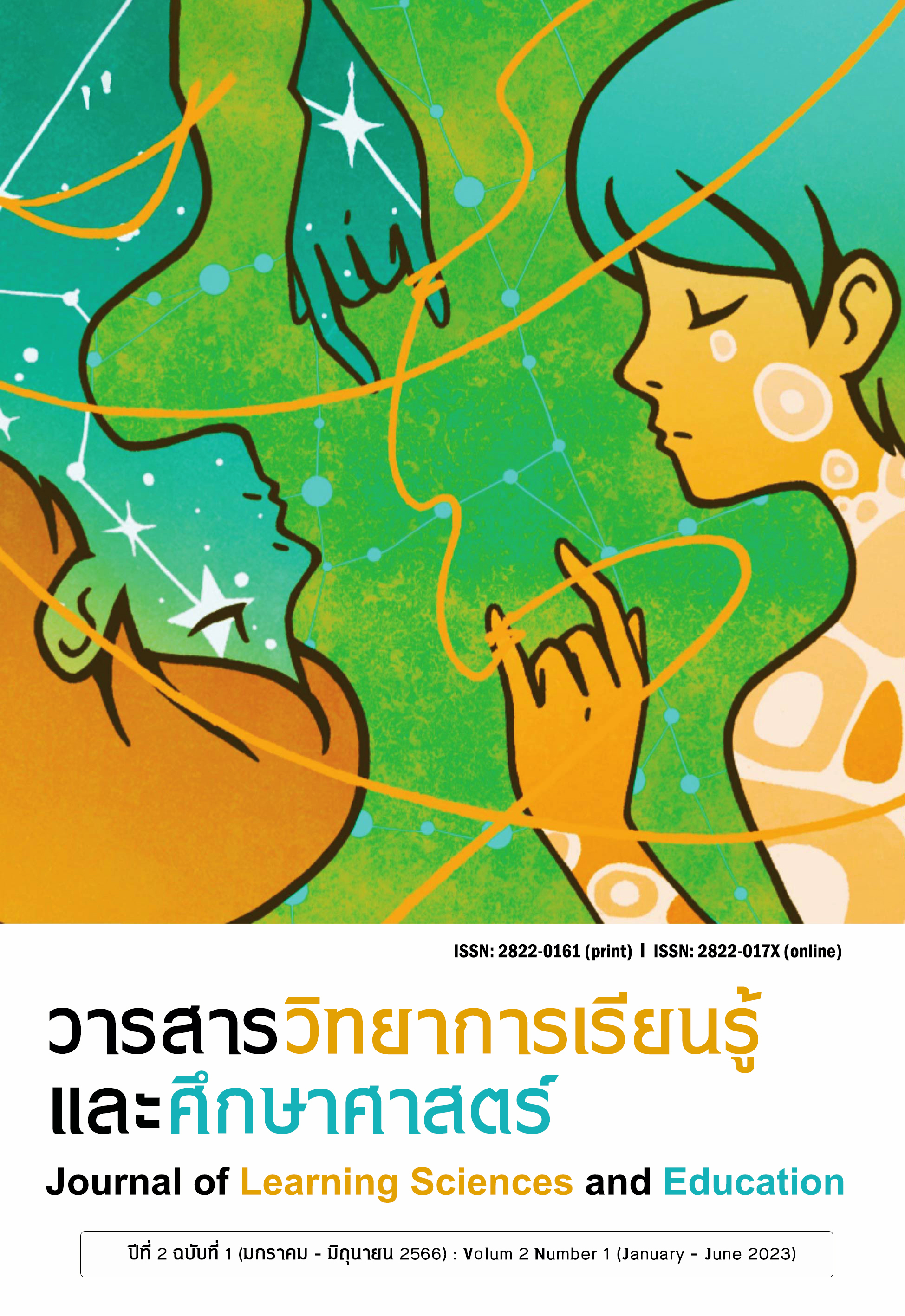Applied Theatre Practitioners’ Knowledge Management: Using Community-Based Youth Theatre for Learning, Collective Consciousness and Identity Building in Youth from their narratives
Main Article Content
Abstract
In this article, four Thai applied theatre practitioners, who are Sombat Keawneuoon, Saowanee Wongjinda, Boonpong Panhit, and Nontawat Machai, were interviewed and observed while they worked with youth in communities. It was carried out to conduct knowledge management (KM) on applied theatre process as a learning tool and process for youth in their projects. The four practitioners employed individualistically unique applied theatre formats and processes that presented narratives from communities. Applied theatre processes allowed for young people to reflect on and create narratives from selected issues pertained to their neighborhood. The selected issue in the community was transformed into a story in which the young actors performed and learned through acting as characters in the situations. After the performance, the youth pursued a critical dialogue with their audience to create collective consciousness and survey solutions for the issue.
Article Details

This work is licensed under a Creative Commons Attribution-NonCommercial-NoDerivatives 4.0 International License.
References
Adams J.R., & Charles N. (2013). Learning Through Theatre: The Changing Face of Theatre in Education. (3rd ed.). Routledge, pp. 287-304. https://doi.org/10.4324/9780203116753
Barber, R. (2008). The art of peace: A toolkit of theatre art for conflict resolution. Makhampom Foundation
Blatner, A. (2007). Interactive and improvisational drama: Varieties of applied theatre and performance. iUniverse
Freire, P. (2015). Pedagogy of the Oppressed. Continuum. Damrhung, P. (n.d.). ละครประชาชน: ความเปลี่ยนแปลงจากภายในนำสู่การเปลี่ยนแปลงที่ยั่งยืน [Public Drama: Internal Transformation Leading to Sustainable Change]. Makhampom Foundation.
Damrhung, P. (2014). ละครประยุกต์ การใช้ละครเพื่อการพัฒนา [Applied Drama: The Use of Drama for Development]. Chulalongkorn University Press.
Green, M. E. (2017). Race, class, and religion: Gramsci’s conception of subalternity. In C. Zene (Ed.), The political philosophies of Antonio Gramsci and B.R. Ambedkar: Itineraries of dalits and subalterns (pp. 116–128). Routledge. https://doi.org/10.4324/9780203762035.
Guha, R., & Spivak, G. C. (1988). Selected subaltern studies. Oxford University Press.
Hornbrook, D. (1998). Education and Dramatic Art (2nd ed.). Routledge.
Jungwiwattanaporn, P. (2004). ละครสร้างสรรค์สำหรับเด็ก [Creative drama for students]. Institute of academic development Makhampom foundation (n.d.). เมล็ดพันธุ์แห่งปัญญา 2 คู่มือกิจกรรมและบันทึกประสบการณ์ โครงการละครเพื่อการเปลี่ยนแปลง [Seeds of Wisdom 2: Manuals of Activities and Experience Recording for the Drama Project for Transformation.]. Makhampom foundation.
Ngamchaipisit, K. (2023). ฟาสามัญ: คู่มือสร้างกระบวนการกลุ่มเพื่อขับเคลื่อนสู่ความเป็นธรรม [General Fa: handbook of developing of group process for driving to Justise]. Peace Resource Collaborative
Nicholson, H. (2005). Applied Drama the Gift of Theatre. Palgrave Macmillan.
Prentki, T., & Preston, S. (2009). The applied theatre reader. London: Routledge.
Romrattanaphan, V. (2005). ทุนทางสังคม [Social capital]. เสริมสร้างการเรียนรู้เพื่อชุมชนเป็นสุข (สรส.).
Spivak, G. C. (1988) “Can The Subaltern Speak?”, in C. Nelson & L. Grossberg (Eds.), Marxism and the Interpretation of Culture (pp. 267-310). McMillan Education.
Sutthinarakorn, W. (2017). Transformative Learning and Action Research (2nd ed.). Siamparitut.
Taylor, Philip. (2003). Applied Theatre Creating Transformative Encounters in the Community. New York University.
Toburin, P., & Suraswadi, P. (2022). เยาวชนคนรุ่นใหม่กับศิลปะสะท้อนการเมืองและสังคมร่วมสมัย: มุมมอง พลวัตและความท้าทายในการสร้างสรรค์ (สาขาศิลปะการละคร) [Young generation and arts reflecting politics and contemporary society: perspectives, dynamics, and challenges in making arts (theatre arts)]. Faculty of learning sciences and education, Thammasat University.

